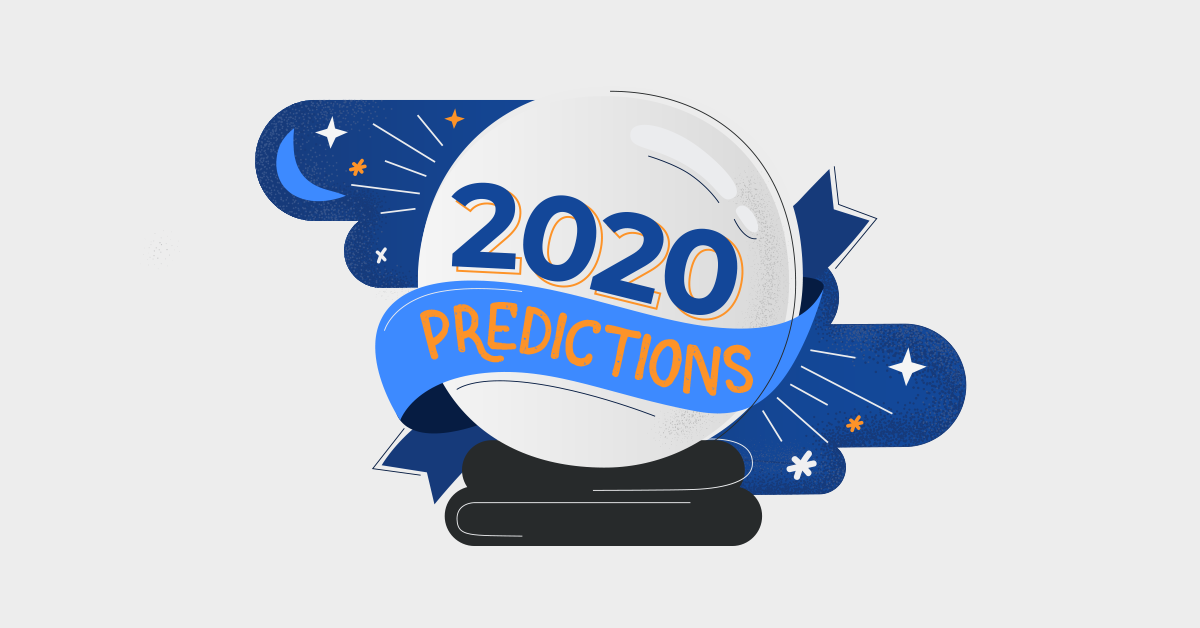CreatorIQ is all about the data. So rather than speculate, we’ve decided to predict the future of influencer marketing by running the numbers.
To do so, we analyzed trends pulled from our expansive platform and aggregated stats from our 2020 industry benchmark report, produced in partnership with Influencer Marketing Hub.
Influencer marketing budgets will continue to increase
More industries than ever are incorporating influencer marketing into their mix. We’ve seen continued campaign expansion among mainstay verticals like beauty and travel, but have also seen new explosive interest from companies in nontraditional industries like finance or IT/ networking.
The impact of good influencer marketing has held up against increased ROI scrutiny, and so companies continue to afford the channel larger sums of money to play with. When polled, 65% of respondents said their influencer marketing budgets will increase this year.
Influencer marketing is also taking up a significant portion of overall marketing budgets -- in fact, 39% of companies said they have a marketing budget with more than 20% of spend dedicated to influencer marketing!
Overall influencer marketing spending will grow
It makes sense that as budgets increase, so too will spend.
Looking at historical campaign data, CreatorIQ found that the average number of required posts per company rose about 30% from 2018 to 2019, and that the average number of creators activated per company in a year rose about 8%. This suggests that influencer marketers are asking more creators to make more posts in more campaigns.
In 2020, more than 50% of influencer marketers are planning to spend more than $10k -- and 15% are planning to spend more than $100k!
Instagram will remain queen
By the end of 2019, Instagram was used in more than 94% of all influencer marketing campaigns. Barring any sweeping changes by Facebook, we expect Instagram’s dominance to continue into 2020.
Instagram also continues to build for the creator economy. Last year, they made big waves with updates to the Brand Collabs Manager, IGTV revenue, likes in the app, and creator accounts. We don’t expect Instagram to slow down in 2020.
Despite Instagram’s dominance, a couple other platforms also broke into the popular mix. Tik Tok enjoyed its time as the most downloaded app in the app store in Q1 of last year, and upstart Byte stole some attention with its relaunch of that beloved Vine look and feel.
ROI measurement will matter more
As influencer marketing matures, so too must the ways we measure it. Traditionally, campaigns have been measured by proxy metrics that are easy to understand -- by “earned media value,” estimated reach, engagement rates, or others.
Influencer marketing is now being held in comparison to other digital marketing channels, though… and direct response campaigns (where the goal is to drive real sales) are becoming increasingly common. As influencer marketing takes more cues from its affiliate marketing cousin, it must pay less attention to engagements and more attention to ROAS.
Marketers at large agree. 65% of influencer marketers said that the ROI of their influencer marketing campaigns matters enough to measure -- and for 38% of respondents, “ROI” means conversions/ sales. A growing number of respondents also indicated that sales are their primary influencer marketing goal -- 36%, to be exact.
Use of 3rd-party platforms will rise
When drilling into just companies with more than 100 employees, we find that only 43% already use a 3rd-party influencer marketing platform like CreatorIQ. If the growth of the industry is any indication, this number will continue to rise throughout 2020.
Additionally, enterprises will look to establish in-house systems of record, on top of which their agency partners will work. Since data transparency is so essential to influencer marketing clarity, brands will realize the importance of owning their data first and executing on top of it second.
Influencer discovery will remain unsolved
There are plenty of reasons why influencer marketing teams adopt technology, but one still rules above all others: creator discovery. More than half of influencer marketers -- 64% -- use a 3rd-party influencer marketing platform primarily for discovery or communication. And 85% of marketers feel that finding appropriate influencers is “of medium to high difficulty.”
Companies like CreatorIQ will continue to iterate upon their Discovery technology in innovative ways; predictive analytics, lookalike-based discovery, and image recognition advancements are the solutions of the future.
Influencer fraud’s consequences will be mitigated
In 2018, an industry-wide alarm bell rang loud following the publication of Keith Weed’s public smackdown of fraud in the New York Times. Following this, we saw an explosion of powerful tools created with the aim of combating fraud (CreatorIQ is no exception).
Though fraud is far from solved, influencer marketers in 2020 will (mostly) have what they need to avoid being hit by its negative impacts. Between the gold rush of 3rd-party solutions and the social platforms’ own efforts, fake audiences and engagements are becoming much easier to spot and avoid.
Lastly, as wiser marketers tout smarter tools, the blackhat incentives for creating fake audiences have been eclipsed by the commercial upside of just building a community naturally. Everyone now sees that buying fake followers or engagements is a shortcut to nowhere.

